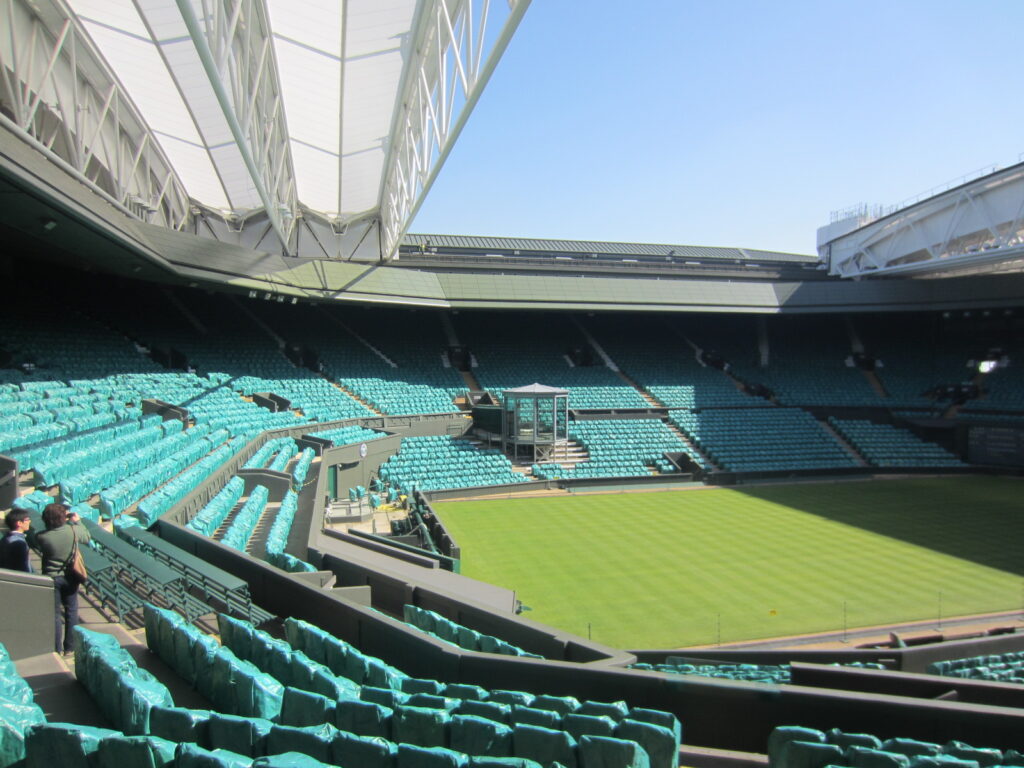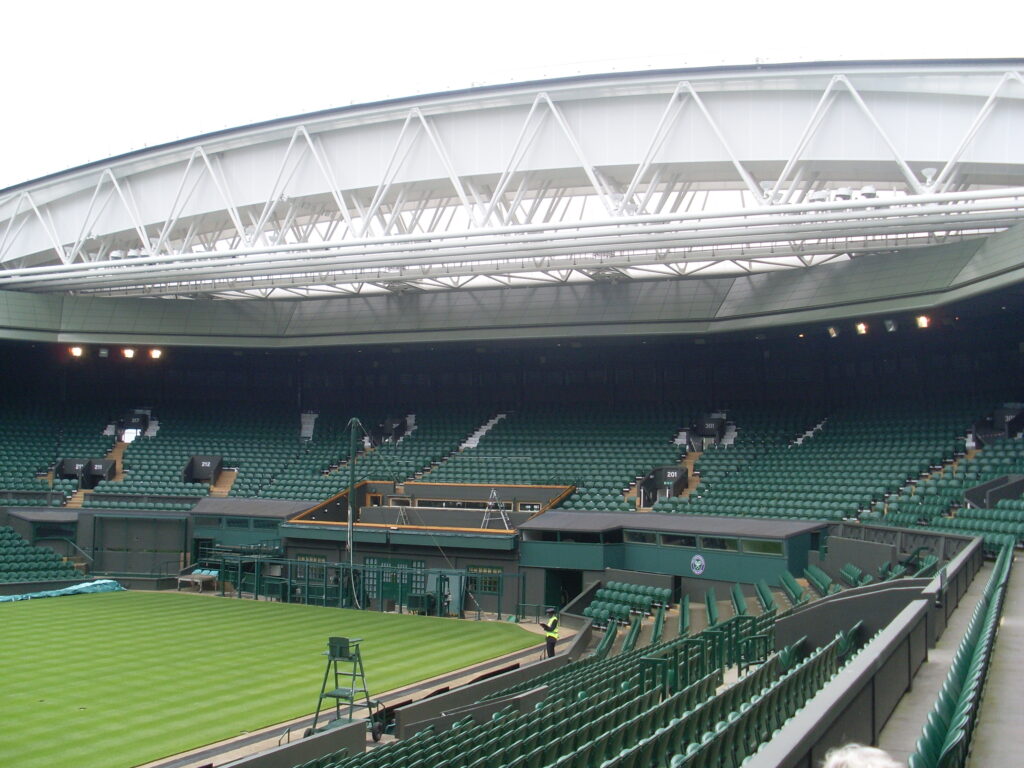The Wimbledon fortnight is one of our favourite times of year, not just because we are huge tennis fans but because it gives us a very relevant and high profile platform from which we can wax lyrical about the benefits of having a cover over your court, allowing play to continue through the rain.

We’re not claiming that playing tennis indoors is better than playing in the open air but having the facilities in place to enable both gives you more options. As a club offering tennis as part of it’s membership programme, a covered structure ensures that the sport is available at any time of the year, not just limited to the summer months (when it’s not raining). This is more likely to attract and retain members as well as decent coaches. There is already rain in the air and what an anti-climax it would be to the fans, the sponsors and the broadcasters if this prestigious tournament started without any action, but that’s how it used to be before the retractable roof.
There has actually been a fixed perimeter roof over Centre Court since 1922 but that only provided shelter to the spectators and whenever the heavens opened it fell to the ball boys and girls to quickly pull a cover over the grass court.
The original roof has been modified several times since then but after the 2006 championships, it was removed. The lack of a roof played a key role in the finish to the now-legendary 2008 men’s final between Federer and Nadal, which saw the match end in near-darkness after almost two hours of rain delays.
The closed-court game was eventually tested successfully on 17 May 2009 under a new folding fabric concertina roof, which sits above the main fixed roof, modelled on the 1922 dodecahedron form. At 65m × 75m, the folding roof is constructed using a lightweight, but durable (can withstand wind speeds of up to 43mph), waterproof translucent material (0.5mm thick), which allows natural light in but keeps dampness off the ground and helps the natural grass to grow by controlled air conditioning. When it’s on, eight litres of fresh air per person, per second is pumped into the bowl to manage the environment.

Now for the really technical bit – with a total of nine bays of structural fabric, the retractable roof is divided into two sections, with four bays in one section and five in the other. Ten steel trusses, each weighing 70t and spanning 77m, fasten the bays. Each truss is supported by a set of wheels that move along a track. Hydraulic jacks and arms move the trusses apart and stretch the fabric between them until the north and south sections seam the court. The speed of truss deployment is 214mm a second. The coordinated electro mechanical movement also unfolds and stretches the fabric between the trusses until the two sections meet in an overlapping seam, 16 m above the middle of the court to provide clearance for high balls.
It takes about ten minutes for the roof to unfold completely. That’s more than enough time for Sir Cliff Richard to treat everyone to a burst of his smash hits (excuse the pun), although some may wish the roof closed a bit quicker! At least the roof improves the stadium’s acoustics even if it can’t improve Sir Cliff’s music*
*We’re actually massive fans ☺
